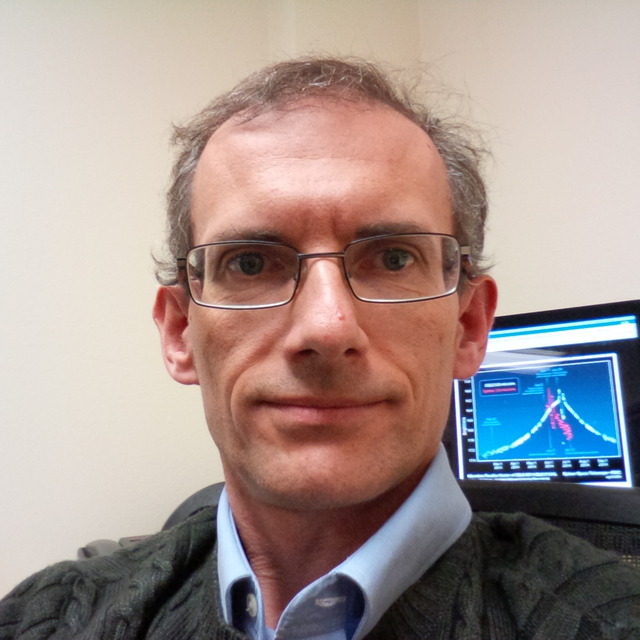January
2018
•
2018AJ....155...40R
Authors
•
Ryu, Y. -H.
•
Yee, J. C.
•
Udalski, A.
•
Bond, I. A.
•
Shvartzvald, Y.
•
Zang, W.
•
Figuera Jaimes, R.
•
Jørgensen, U. G.
•
Zhu, W.
•
Huang, C. X.
•
Jung, Y. K.
•
Albrow, M. D.
•
Chung, S. -J.
•
Gould, A.
•
Han, C.
•
Hwang, K. -H.
•
Shin, I. -G.
•
Cha, S. -M.
•
Kim, D. -J.
•
Kim, H. -W.
•
Kim, S. -L.
•
Lee, C. -U.
•
Lee, D. -J.
•
Lee, Y.
•
Park, B. -G.
•
Pogge, R. W.
•
KMTNet Collaboration
•
Calchi Novati, S.
•
Carey, S.
•
Henderson, C. B.
•
Beichman, C.
•
Gaudi, B. S.
•
Spitzer Team
•
Mróz, P.
•
Poleski, R.
•
Skowron, J.
•
Szymański, M. K.
•
Soszyński, I.
•
Kozłowski, S.
•
Pietrukowicz, P.
•
Ulaczyk, K.
•
Pawlak, M.
•
OGLE Collaboration
•
Abe, F.
•
Asakura, Y.
•
Barry, R.
•
Bennett, D. P.
•
Bhattacharya, A.
•
Donachie, M.
•
Evans, P.
•
Fukui, A.
•
Hirao, Y.
•
Itow, Y.
•
Kawasaki, K.
•
Koshimoto, N.
•
Li, M. C. A.
•
Ling, C. H.
•
Masuda, K.
•
Matsubara, Y.
•
Miyazaki, S.
•
Muraki, Y.
•
Nagakane, M.
•
Ohnishi, K.
•
Ranc, C.
•
Rattenbury, N. J.
•
Saito, To.
•
Sharan, A.
•
Sullivan, D. J.
•
Sumi, T.
•
Suzuki, D.
•
Tristram, P. J.
•
Yamada, T.
•
Yamada, T.
•
Yonehara, A.
•
MOA Collaboration
•
Bryden, G.
•
Howell, S. B.
•
Jacklin, S.
•
UKIRT Microlensing Team
•
Penny, M. T.
•
Mao, S.
•
Fouqué, Pascal
•
Wang, T.
•
CFHT-K2C9 Microlensing Survey Group
•
Street, R. A.
•
Tsapras, Y.
•
Hundertmark, M.
•
Bachelet, E.
•
Dominik, M.
•
Li, Z.
•
Cross, S.
•
Cassan, A.
•
Horne, K.
•
Schmidt, R.
•
Wambsganss, J.
•
Ment, S. K.
•
Maoz, D.
•
Snodgrass, C.
•
Steele, I. A.
•
RoboNet Team
•
Bozza, V.
•
Burgdorf, M. J.
•
Ciceri, S.
•
D'Ago, G.
•
Evans, D. F.
•
Hinse, T. C.
•
Kerins, E.
•
Kokotanekova, R.
•
Longa, P.
•
MacKenzie, J.
•
Popovas, A.
•
Rabus, M.
•
Rahvar, S.
•
Sajadian, S.
•
Skottfelt, J.
•
Southworth, J.
•
von Essen, C.
•
MiNDSTEp Team
Abstract
•
We report the discovery of OGLE-2016-BLG-1190Lb, which is likely to be the first Spitzer microlensing planet in the Galactic bulge/bar, an assignation that can be confirmed by two epochs of high-resolution imaging of the combined source-lens baseline object. The planet’s mass, M p = 13.4 ± 0.9 M J , places it right at the deuterium-burning limit, i.e., the conventional boundary between “planets” and “brown dwarfs.” Its existence raises the question of whether such objects are really “planets” (formed within the disks of their hosts) or “failed stars” (low-mass objects formed by gas fragmentation). This question may ultimately be addressed by comparing disk and bulge/bar planets, which is a goal of the Spitzer microlens program. The host is a G dwarf, M host = 0.89 ± 0.07 M ⊙, and the planet has a semimajor axis a ∼ 2.0 au. We use Kepler K2 Campaign 9 microlensing data to break the lens-mass degeneracy that generically impacts parallax solutions from Earth-Spitzer observations alone, which is the first successful application of this approach. The microlensing data, derived primarily from near-continuous, ultradense survey observations from OGLE, MOA, and three KMTNet telescopes, contain more orbital information than for any previous microlensing planet, but not quite enough to accurately specify the full orbit. However, these data do permit the first rigorous test of microlensing orbital-motion measurements, which are typically derived from data taken over <1% of an orbital period.
Links




